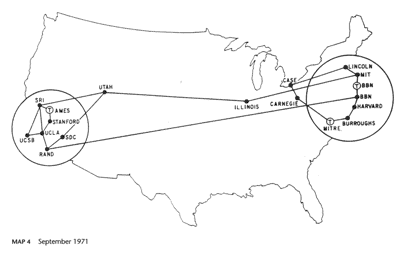RFCs
Message not compliant with the RFCs
- laura
- May 30, 2022
Every once in a while we’ll see a rejection from Yahoo that says RFCs 554 5.0.0 Message not accepted due to failed RFC compliance. What does that mean and what can we do about it?
SenderID is dead
- laura
- Mar 5, 2019
A question came up on the email geeks slack channel (Join Here) about SenderID. They recently had a customer ask for SenderID authentication.
Read More10 things every mailer must do
- laura
- Sep 26, 2017
A bit of a refresh of a post from 2011: Six best practices for every mailer. I still think best practices are primarily technical and that how senders present themselves to recipients is more about messaging and branding than best practices. These 6 best practices from 2011 are no longer best, these days, they’re the absolute minimum practices for senders.
If you can’t manage to do these, then find someone who can.
Email History through RFCs
- steve
- Sep 1, 2014
Many aspects of email are a lot older than you may think.
There were quite a few people in the early 1970s working out how to provide useful services using ARPANET, the network that evolved over the next 10 or 15 years into the modern Internet.
They used Requests for Comment (RFCs) to document protocol and research, much as is still done today. Here are some of the interesting milestones.
April 1971 [rfc 114]RFC 114 A File Transfer Protocol.[/rfc] One of the earliest services that was deployed so as to be useful to people, rather than a required part of the network infrastructure, was a way to transfer files from one computer to another. In the [rfc 114]earliest versions[/rfc] of the service I can find it could already append text to an existing file. This was soon used for sending short messages, initially to a remote printer from where it would be sent by internal mail, but soon also to a mailbox where they could be read online.
August 1971 [rfc 221]RFC 221 A Mail Box Protocol, Version-2[/rfc] had this prescient paragraph:
Does email have a guarantee of delivery?
- laura
- Jan 31, 2014
A client asked me earlier this week what SLAs ISPs provided for email delivery. The short answer is that there isn’t a SLA and that the only guarantee is that the email will get there when it gets there.
But as I was mentioning this to Steve, he pointed out that there was a recent change in the RFCs for email. In both RFC 821/2 and RFC 2821/2 (the original email related RFCs and the update in the early 2000’s) the RFCs stated that once a receiving MTA accepted an email that that MTA was required to either delivery the mail or generate an asynchronous bounce. While this isn’t a standard SLA, it does mean that a 2xy response after DATA meant the email would either be delivered to the user or be sent back to the sender. Despite the RFC requirements some receivers would still drop mail on the floor for various reasons, sometimes intentionally and sometimes not.
RFC 5321/2, the current SMTP standard, still says that once a server accepts the mail it must not lose that mail ‘for frivolous reasons.’ The RFC goes on to admit, though, that in recent years, SMTP servers are under a range of attacks and dropping mail on the floor is not frivolous in those cases.
The Physics of the Email Universe
- steve
- Apr 4, 2012
We talk a lot about rules and best practices in email, but we’re mostly talking about “squishy” rules-of-thumb that are based on simplified models of how mail systems, spam filters, recipients, postmasters and blacklist operators behave. They’re the biology, ecology and sociology of the email ecosystem.
There’s another set of rules we tend to only mention in passing, if at all, though. They’re the steely, sharp-edged laws that control the email universe. They’re the RFCs that define how email works and make sure that mail systems written by hundreds of different people across the globe all work and all interoperate with each other.
Building a message from Zeros and Ones
RFC 5322 – Internet Message Format
This tells you everything you need to know about crafting a simple email, with a subject line, a sender, some recipients and a simple plain-text message. It’s also the foundation of all fancier emails. If you’re creating emails, this is where to start.
A little more than plain ASCII
RFC 2047 – MIME Part 3: Message Header Extensions for Non-ASCII Text
RFC 2047 is one small part of the MIME (Multipurpose Internet Mail Extensions) suite of protocols that allow you to include pictures and attachments and prettily formatted text and comic sans in your email. This part defines how you can put things other than the plainest of plain text in your subject lines or in the “friendly from” of your message. It’s what allows you to put Hiragana, or Cyrillic, or umlauts, or cedillas, or properly matched double quotes in your subject line. It also let’s you put hearts or smiley faces or other little pictograms there – but nothing this useful is going to be perfect.
RFC 2045 – MIME Part 1: Format of Internet Message Bodies
This shows how to send an image, or a plain text mail in a different character set, or an HTML mail. It doesn’t tell you how to send plain text and HTML, or to send HTML with embedded images, or a message with an attached document. For that you need…
Finally, Modern Email
RFC 2046 – MIME Part 2: Media Types
This builds on RFC 2045 to allow you to have many different chunks in a message – this is what you need if you want to send “proper” HTML mail with a plain text alternative, or if you want embedded images or attachments.
Getting From A To B
RFC 5321 – Simple Mail Transfer Protocol
A message isn’t much use unless you send it somewhere. RFC 5321 explains the mysteries of actually sending that message over the wire to the recipient. If you need to know about the different phases of a message delivery, what “4xx” and “5xx” actually mean, why there’s not really any such thing as a hard or soft bounce defined, just temporary or permanent failures, or anything else about actually sending mail or diagnosing mail delivery, this is your starting point.
The Rest Of The Iceberg
I’ve only touched on the very smallest tip of the email iceberg here. There’s much, much more – both in RFCs and ad-hoc non-RFC standards. If you’re interested in more, this is a decent place to start.
Six best practices for every mailer
- laura
- Nov 1, 2011
People get into all sorts of details when talking about best practices. But so much of email depends on the type of email and the target market and the goals of the sender. It’s difficult to come up with universal best practices.
I’ve said in the past that I think that best practices are primarily technical. I don’t believe there is a best frequency or a best time to send mail or a best image to text ratio.
My top 6 best practices every marketer should be doing (and too few are).
Email Standards Updated
- laura
- Oct 2, 2008
This morning I received notification that the IETF had approved RFC5321 and RFC5322. These two RFCs are standards track and are updating the current email standards RFC821/822 and RFC2821/2822.
MailChannels has a description of the changes between 2821/2822 and 5321/5322. While the new RFCs obsolete the old ones, they are more a clarification than actual changes to the protocols. Dave Crocker had this to say about the new documents.